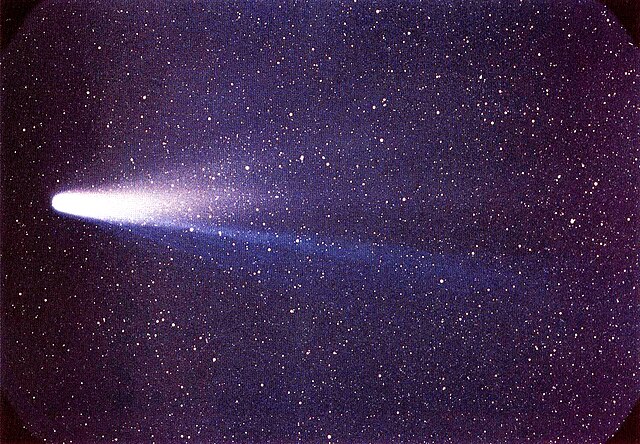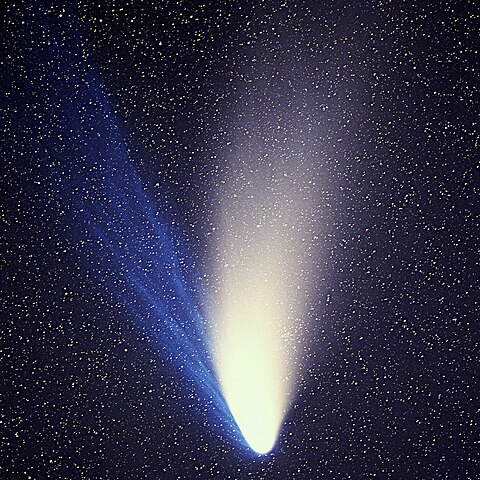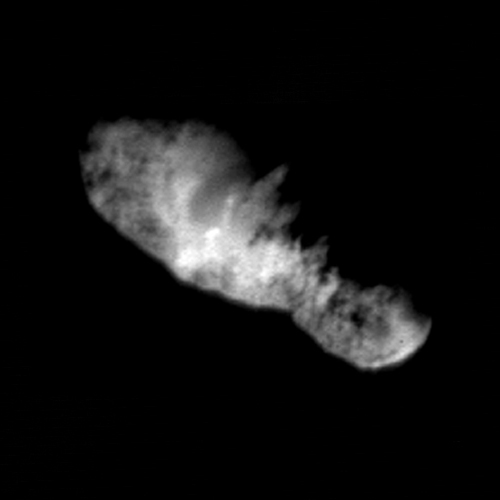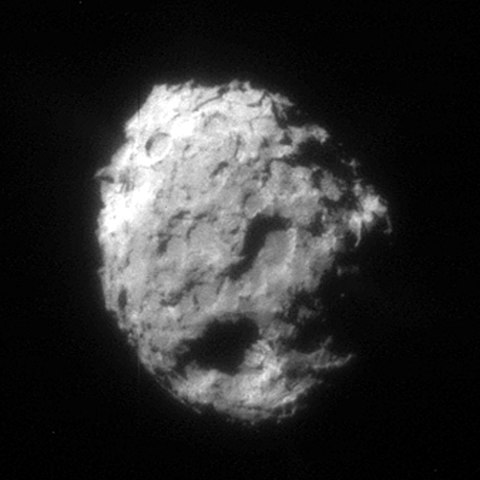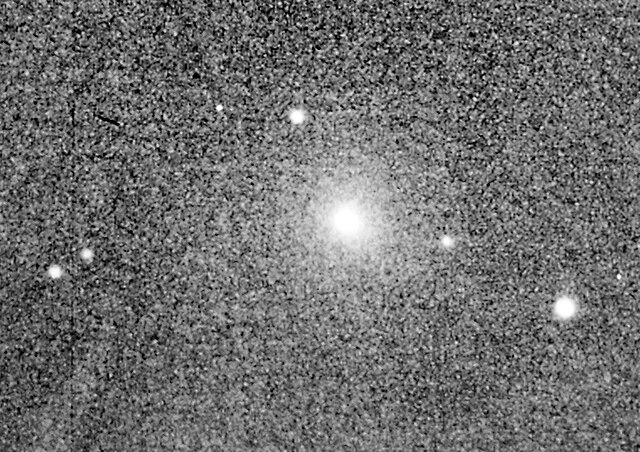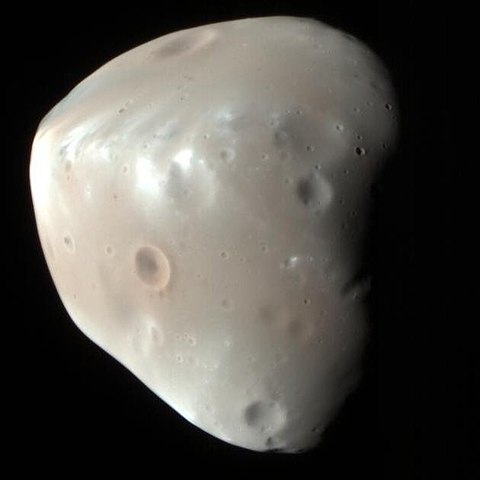1 day / second
0.5 AU
9P/Tempel 1
Comet
A Jupiter-family comet that became the target of NASA's Deep Impact mission in 2005, when a copper-core projectile was deliberately crashed into its nucleus to study its composition.
Key Facts
learn more | Wikipedia |
mass | 7.2000e+13 kg |
radius | 3.2 km |
hill radius | 529.326 km |
semi-major axis | 3.146 AU |
eccentricity | 0.51 |
inclination | 10.473º |
longitude of the ascending node | 68.754º |
argument of periapsis | 179.196º |
orbital period | 5.581 years |
discovery date | April 3, 1867 |
discovered by | Wilhelm Tempel in Marseille |
name origins | Named after its discoverer Wilhelm Tempel |
dimensions | 7.6 km × 4.9 km |
albedo | 0.05 |
material composition | Primarily ice and dust |
density | 0.62 g/cm³ (calculated from given mass and volume) |
Spacecraft Visits
Deep Impact
Impactor
Launched in 2005, impacted in 2005
The Deep Impact spacecraft collided its 370kg copper-core impactor with comet Tempel 1 on July 4, 2005, creating a crater and ejecting subsurface material that revealed new details about cometary composition.
Stardust
Flyby
Launched in 1999, visited in 2011
Stardust performed a close flyby of comet Tempel 1 on February 14, 2011, passing within 178 kilometers of the nucleus and capturing detailed images of surface changes since the comet's previous encounter with Deep Impact in 2005.



